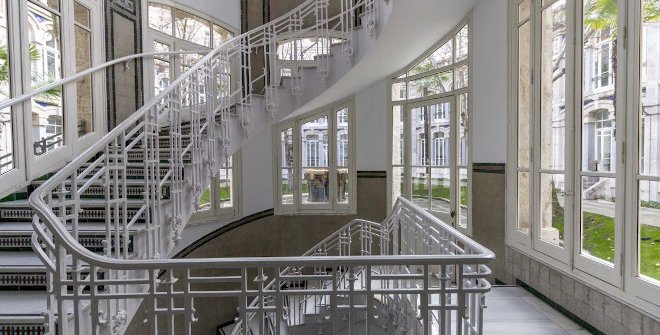Located in the district of Chamberí, this imposing palatial building, designed by architect Antonio Palacios together with Joaquín Otamendi, was built between 1908 and 1916. It was commissioned by Dolores Romero, widow of the steel business owner Curiel y Blasi, who wanted a building that would house a hospital (the headquarters of her foundation) to care for workers who did not have sufficient economic means. It now houses the Ministry of Transport, Housing and Infrastructure
The former Hospital de Jornaleros de San Francisco de Paula (a centre for day labourers, or journaleros, also known as Hospital de Maudes) takes up an entire block, with the radial layout centred around a central octagonal courtyard, divided into four sections, two occupied by the rectangular pavilions of the hospital wards, and the other two used to house the service buildings. The corridors and stairwells are open and spacious to facilitate good ventilation and lighting of the rooms.

Five different types of stone were used for its construction: white limestone, granite, slate, marble and siliceous stone. The stone façade bears ceramic elements, originally created by Daniel Zuloaga, while the interior is adorned with ceramics from Seville as well as traditional tile work.
During the Civil War and post-war periods, the hospital was used for military purposes, caring for soldiers and their families. Civilian personnel in the service of the military administration and their families were also looked after here.
From 1964 to 1984, the building fell into decay and was eventually abandonded until it was bought by Madrid's regional government. Work on its renovation began under the orders of architect Andrés Perea Ortega, who decided not to remove the original elements that had been preserved and to design furniture that would establish a dialogue with the work of Antonio Palacios.
The building won the Annual City Hall Award in 1917 and was declared an Artistic Historical Monument in 1979. Since 1997, it has been included in the catalogue of protected buildings with special protected status in Madrid’s General Urban Plan.